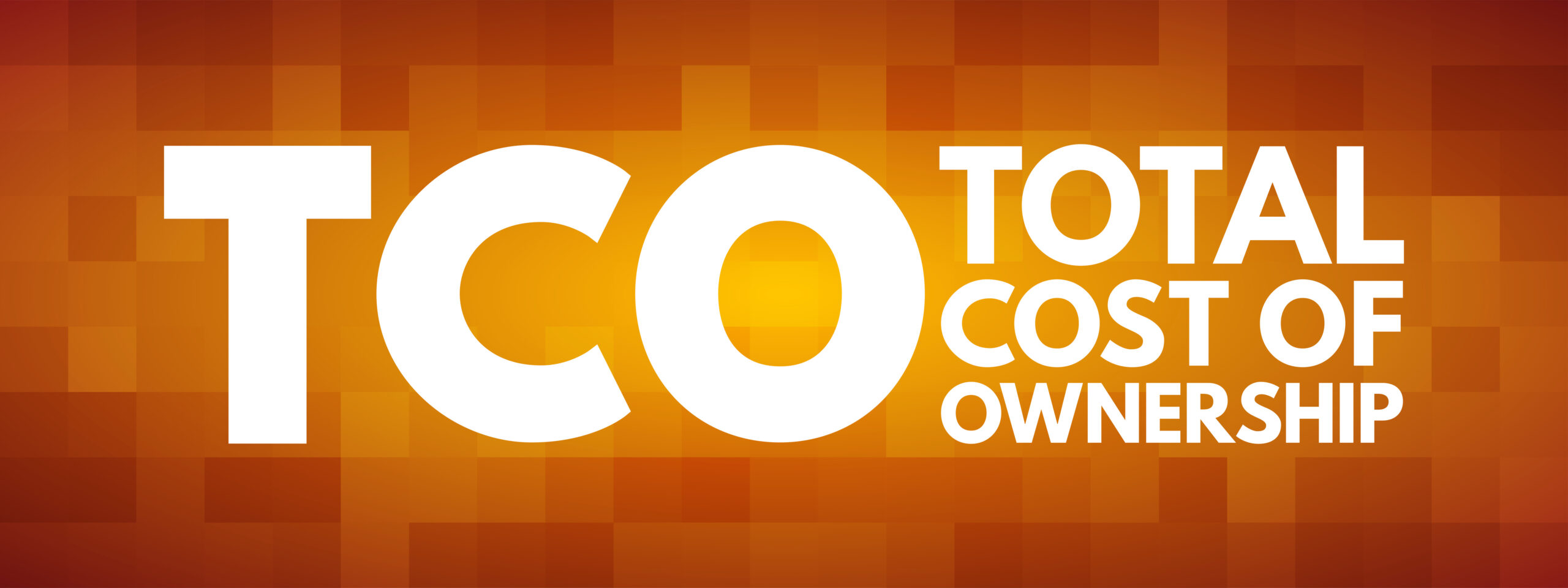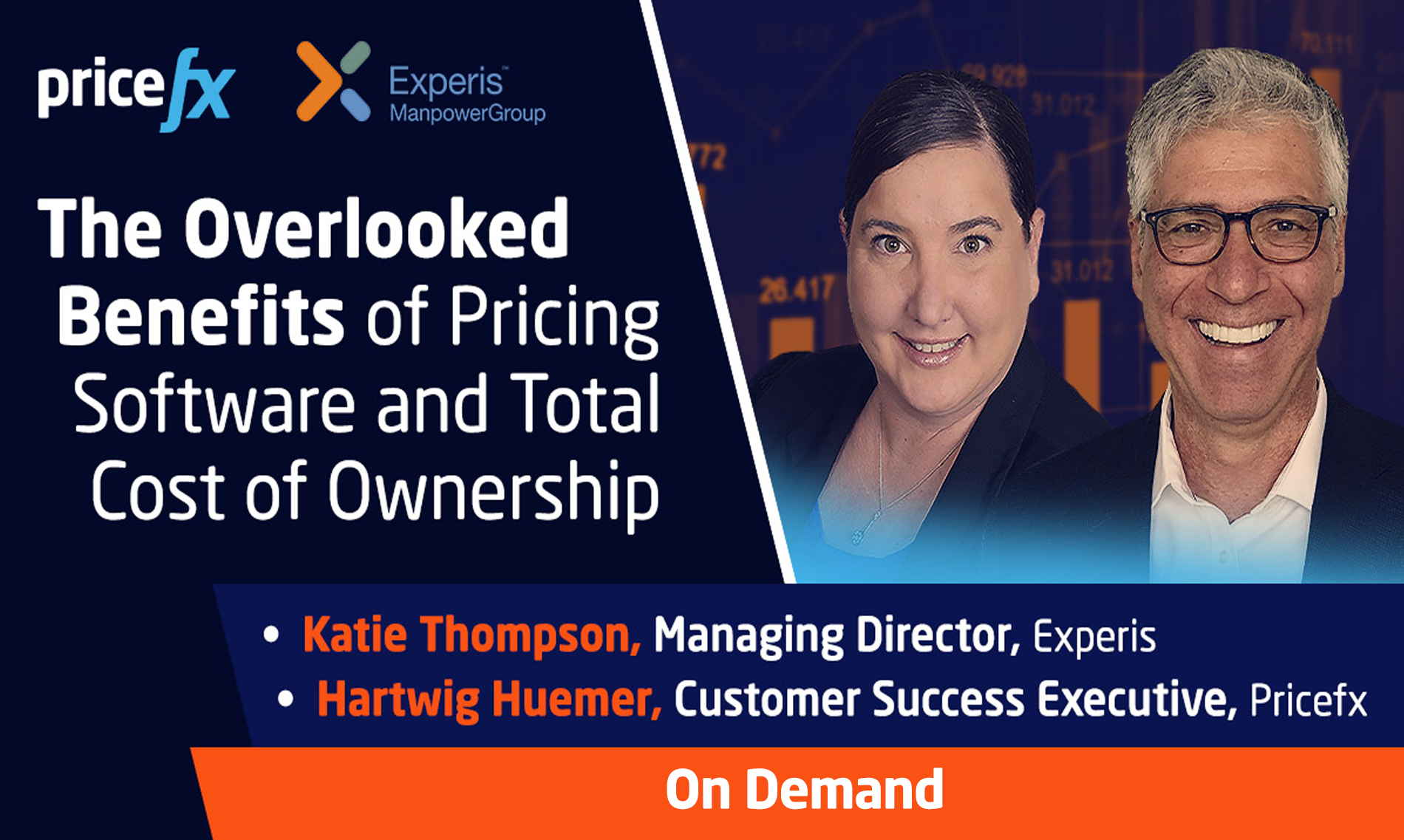The Top 6 Benefits of True Cloud Native Pricing Software
March 21st, 2022 (Updated 03/10/2023) | 10 min. read
By Ken Edwards
Picture this, you’ve decided to upgrade your pricing system from Excel or an on-premise pricing solution to pricing software and have chosen a software provider that claims to be “cloud-hosted”. You correctly understand that cloud solutions offer you the flexibility and security you need to grow and improve profitability across your organization. A year after implementation, there is a critical update to the system that allows you to improve your workflows, saving you time and money in a time-sensitive and competitive environment. Unfortunately, you can’t get the update without having huge delays in your processes. What’s worse, the update requires several patches, resulting in even more downtime. Unfortunate, but right there, that’s the difference between “cloud-hosted” and “cloud-native” pricing software. While it’s correct to say that both are technically “cloud solutions,” “cloud native” has all the flexibility and speed that true cloud provides without the nightmare of transferring to the cloud from the legacy of on-premises pricing software. To really show you the points of difference, we’ve prepared this article for you on ‘The Top 6 Benefits of True Cloud Native Software’.
At Pricefx, over the last 11 years, we have assisted hundreds of customers to migrate their pricing needs over to a true cloud native pricing software solution from their Excel spreadsheet pricing set-up or from outdated first-generation legacy on-premises pricing systems.
In this article, we’ll discuss the real and everyday differences between true cloud native pricing software and cloud-hosted legacy systems, before turning our attention to the Top 6 benefits of true cloud native pricing software.
Let’s dig in.
What Is Cloud Native Pricing Software & Why Is It the Technology of Now?

Cloud native is a modern approach to building and running pricing software applications that enables the flexibility, scalability, and resilience of cloud computing. Cloud native encompasses the various tools and techniques used by software developers today to build applications for the public cloud, as opposed to traditional technology architectures suited to on-premises data centers.
The cloud native approach to building and running software was pioneered by a group of companies commonly referred to as “born in the cloud” — like ride-hailing company Uber, accommodation booking platform Airbnb and streaming giants Netflix and Spotify. The cloud native approach has since been adopted by other pricing software companies looking for similar digital agility and disruptive competitive advantage.
Cloud native pricing software is hosted by the pricing vendor (no hardware at all to be concerned with), with all maintenance, fixes and upgrades managed by them, freeing up thousands of dollars in hours for your pricing team to do what they do best – generate more profit.
The nature of cloud native pricing platforms means there is little upfront investment to worry about (these types of systems are usually operated as pay-as-you-go models), so you can test it out much easier and sooner. Nothing is wasted or becomes redundant and you’re always on the latest version of the software cost-free. Payments are regular and predictable, save for infrequent and invaluable on-the-fly upscaling.
What Is Cloud Hosted Pricing Software & How Is It a Tool of the Past?
Cloud-hosted pricing software solutions, by contrast, are designed for on-premises environments but are deployed on dedicated servers and managed by a service provider under a cloud hood. However, the major point of difference is that cloud-hosted systems suffer from a lack of end-user configurability as opposed to native cloud pricing software systems.
However, the transition lacks some of the other added cloud native benefits and legacy system ‘hangovers’ remain. Infrastructure, applications, and data exist in dedicated servers in cloud-hosted pricing software, just like their legacy on-premises systems which had all of these locked up behind internal firewalls. It also means that customization to suit your unique suite of business objectives may be difficult, or in some cases simply not possible at all.
The switch to the cloud doesn’t mean that legacy on-premises systems will be able to make grand leaps in innovation overnight. Large upfront costs, longer deployment times than cloud native pricing systems will be apparent, and you will need to have your own servers and maintain them yourself.
So, clearly, if you don’t need to hold on to the past of the big infrastructure your company made in your legacy on-premises pricing system, or you’re switching over from Excel to pricing software for the first time, choosing Cloud Native Software will be a slam-dunk decision for your business. But there are a range of further advantages you might not have even yet considered.
Let’s dive in to analyze the Top 6 Benefits of True Cloud Native Software.
The Top 6 Benefits of True Cloud Native Software
1. Total Cost of Ownership (TCO)
On-premises legacy software systems usually require a large upfront capital investment to cover hardware, server installation, storage, and the software itself. Then there are related costs to having your own server – space, power, cooling, maintenance, IT teams, and replacement parts.
Expensive or disruptive upgrades may leave you on older (and under supported) versions of the software, a common issue shown to be highly cost inefficient.
The difference between the TCO of cloud native and other software is beginning to become more defined.
With cloud native pricing software companies making the shift to an annual subscription method of payment rather than purchasing software outright, the financial risks to organizations are lower.
Native Cloud pricing software based on a subscription model (whether it be monthly, quarterly, annually etc.) versus a one-time enterprise purchase needs to be evaluated. What’s more, it’s a new payment model made possible by changing the technology to native cloud-based solutions where upgrades, add-ons and new pricing strategies can be implemented on the fly.
To learn more about TCO in the pricing software landscape, check out our recent blog article – Does Total Cost of Ownership (TCO) Matter in Pricing Software? Or watch on-demand (link provided in the image below), our recent webinar on TCO:
2. Time Efficient
A cloud-hosted/ on-premises pricing solution environment is run in house within the software company’s own infrastructure by its own IT team, who manage its deployment, installations, training, upgrades, security and maintenance.
Most native cloud pricing software services are provided and encouraged to be self-service and on demand.
Even vast amounts of the resources that your pricing team require can be easily accessed in minutes, typically with just a few mouse clicks, saving organizations a stack of time and giving businesses a lot of flexibility and taking the pressure off capacity planning.
A recent study shows that 79% of IT professionals consider Native Cloud applications and solutions to be important (or very important) to the efficiency of business operations today.
3. Availability
On-premises servers that communicate with cloud-hosted pricing software systems are not reliant on an internet connection, so you’re never affected by a slow connection and your data resides locally for quick access. However, on the other hand, you do have to be logged on to a device with the software already installed to be able to access your data. If a device containing sensitive information is lost, it could have big implications on your pricing team’s ability to do their job. And if anything does go wrong with the server, you need an in-house expert on call to supply a quick fix.
A SysGroup survey found that one of the top reasons organizations are heading to Native Cloud is being able to access their data anytime from anywhere – considered vital to meet growing demands and for success in today’s flexible and global world.
Cloud applications of all kinds (not only pricing software) are available at anytime from anywhere with an Internet connection and via any device, with 99.9% guaranteed up-time.
4. Scalability
Scaling with a cloud-hosted system communicating with an on-premises pricing solution requires manual labor and typically requires buying and deploying new servers, which is both time-consuming and costly.
Scaling in a native cloud environment is not only effortless (even automatic), but it is inherently designed to be flexible.
You can easily add or scale back licenses on the fly and only pay for what you use.
That way, when you’re ready to add price optimization functionality to your current CPQ-only software option, you only pay for it when you need to, rather than paying for a full pricing software tech stack from Day 1 that you may not necessarily require.
5. Save Money
Cost optimization and money saving is the main reason for native cloud migration for 47% of enterprises.
An exhaustive survey by TSO Logic found that 45% of existing Virtual Machines would run more efficiently in native cloud and that by right-sizing them (eradicating the over-provisioning found in 26% of inspected machines), cloud migration would result in a 36% cost saving. In many cases, that would cover the expense of the migration.
According to Opsramp, 94% of companies expect to reduce infrastructure setup and maintenance costs, as well as reduce overall IT spending by moving to the cloud – which might explain why 80% are expecting to spend more than 30% of their IT budgets on cloud infrastructure in the next few years.
6. Data and Security

In an on-premises/cloud-hosted environment, your data security will require in-house management, a very manual and expertise-essential process. Organizations handling extra–sensitive information (like banks) often choose this option, so they are not reliant on third-party security measures – despite the cost and drawbacks of having to ensure heightened security and execute tedious patch management on their end.
On the other hand, native cloud comes with inherent security that is far beyond the affordability and capability of most businesses, combining multi-factor authentication with strong physical security measures that are certain to bring a higher standard of security than your in-house IT team.
Nearly half of organizations employ security safeguards like encryption and multi-factor identification to protect sensitive data in the native cloud.
In native-cloud environments, data backup processes are automated, making the process much easier and faster while also removing the potential for human error. And Cloud-native vendors are equipped to prevent data loss (e.g., from power outages) and have good disaster recovery plans.
Cloud solution providers serious about keeping your data safe will be ISO 27001 certified. They work to a framework of policies, procedures, and controls to protect your data – including financial, intellectual property, employee details, and information entrusted by third parties.
That’s Great – But How Do I Get Started?
Now you have all the information at your fingertips on what cloud-hosted and cloud-native pricing software systems are, in addition to the benefits of switching over to a native cloud pricing solution.
We understand completely if your need remains for an on-premises cloud-hosted solution, given you require complete visibility and control over all your data. But it’s worthwhile remembering that you’ll face large upfront costs, a longer deployment, difficulty scaling, and will have to own and maintain your own servers.
If you’re looking for quick deployment, no hardware (or related) costs, software upkeep managed by the pricing software provider, automated backups and recovery, easy scaling up and down, pay-as-you-go usage-based pricing, sophisticated security, and near-zero downtime risk, then clearly native cloud is the winner.
With a native cloud solution like Pricefx, you will acquire cutting-edge machine learning that helps you turn your data into intelligent, automatic, and insight-driven pricing.
To learn more about selecting the best pricing software to suit your company’s unique set of business objectives, check out the link below to our latest blog article:


